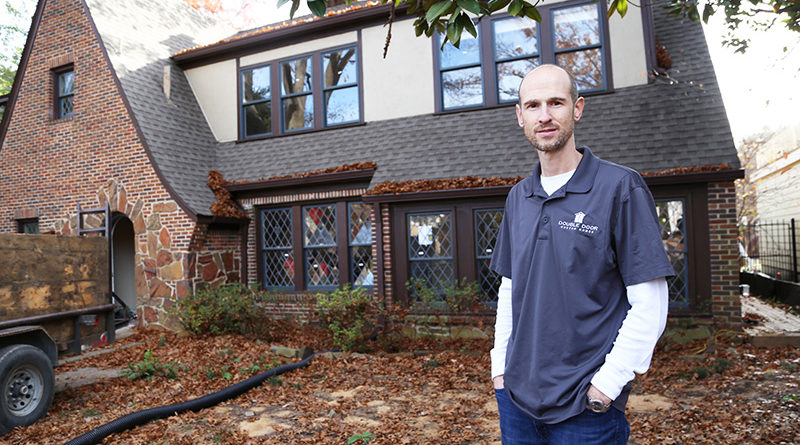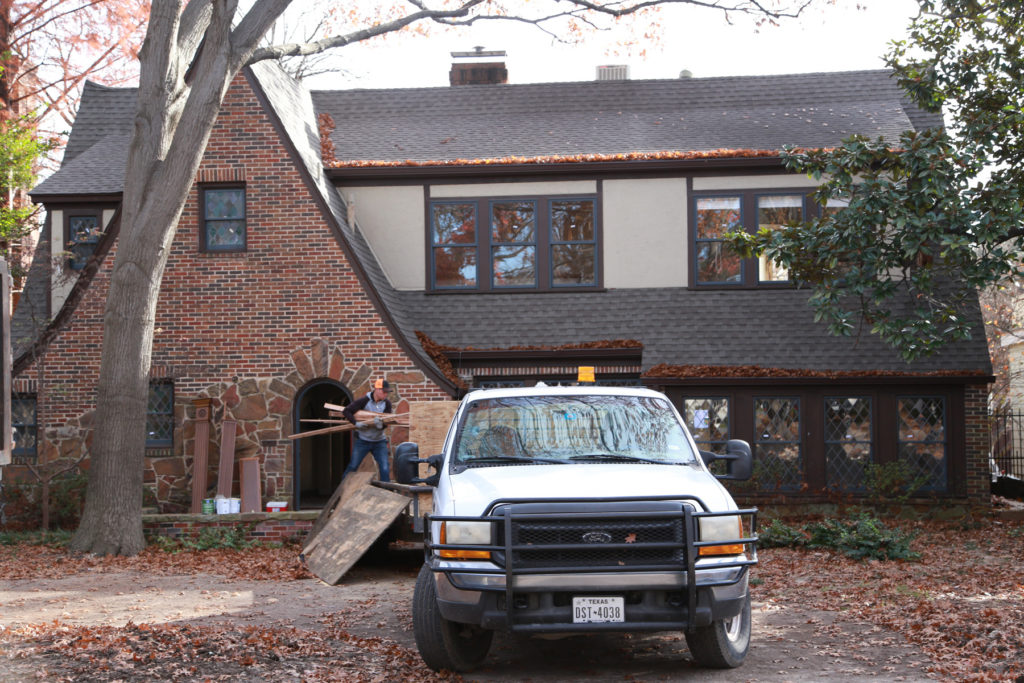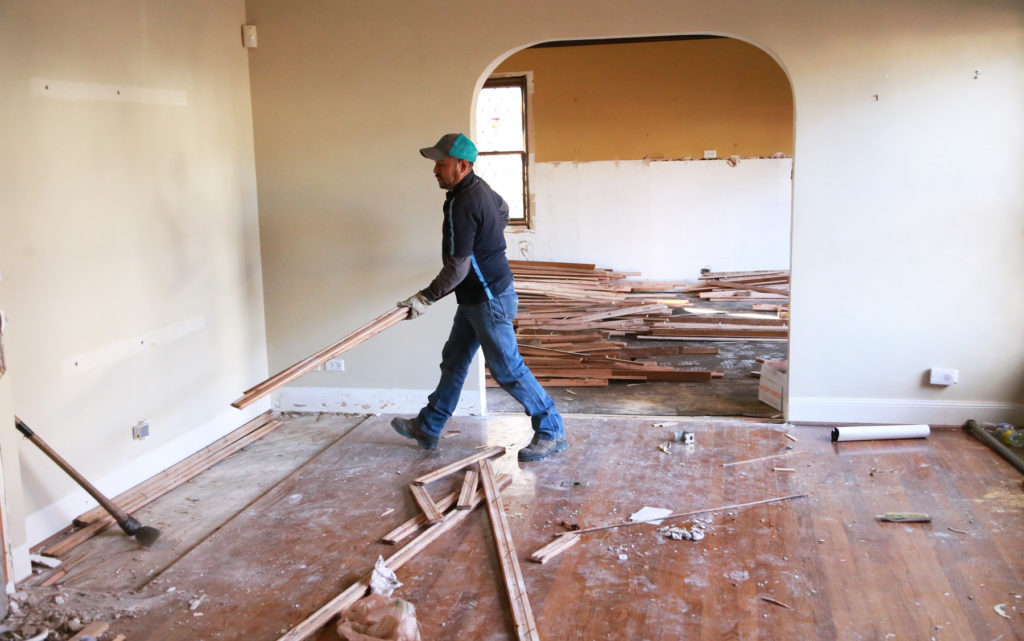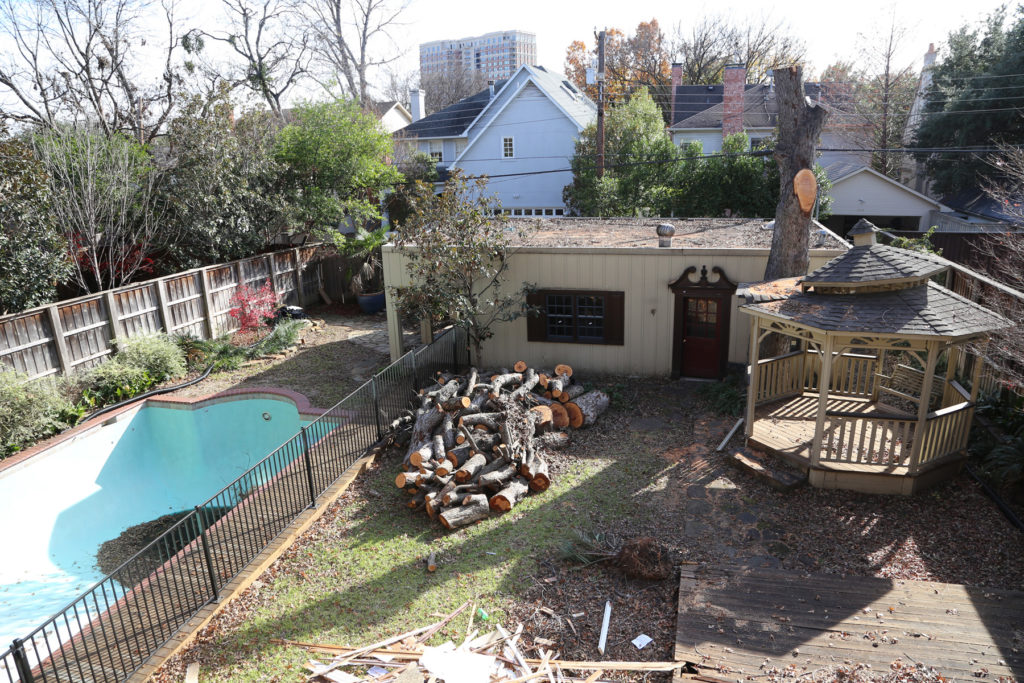Old Home Parts Avoid Landfill, Get Reused
A 1920s house in the 3300 block of Beverly Drive came down before Christmas, but its gifts will keep arriving for some time to come.
A church camp near Bandera is getting the bulk of a dozen tons of flagstone along with a light fixture and pool equipment, while salvage yard workers will remove the mortar from truckloads of bricks often sought by those looking to match materials in other older homes.
(ABOVE: Michael Wilderman, who owns Double Door Custom Homes Inc., plans to build new on this lot. Photo by Chris McGathey)
Likewise, moldings, windows, and wood floors as well as original cabinets, doorknobs, and many fixtures also will eventually become available for use in remodeling and renovation projects, explained Mike Thrutchley, regional manager for the ReUse People of America.
“It’s almost like being an organ donor,” he said.
Since 1993, the nonprofit has kept more than 350,000 tons out of landfills by salvaging more than 2,000 houses nationwide, according to thereusepeople.org.
It’s almost like being an organ donor. -Mike Thrutchley
Thrutchley, a former builder, has represented the organization since 2010 and overseen the demolition and salvage of eight to 10 homes a year, many in affluent neighborhoods along the Dallas North Tollway.
By working with salvage companies and nonprofits across the state, he can keep 60 to 80 percent of a home’s materials out of the landfill. Concrete gets ground up for use under driveways. Plants might go to churches or nurseries. Artists often come to collect shutters or other materials for their projects.
“Our whole thing is we are going to divert this stuff from the landfill, and how we dispose of it is up to us,” he said. However, the salvage process isn’t for everyone. It takes much longer and comes with a heavy upfront cost.
Whereas a home might take two days to bulldoze for about $20,000, taking it apart piece by piece could cost more than twice that and take up to a month, Thrutchley said.
Appraisers help property owners determine whether the tax deductions from donating the old materials would cover or exceed the demolition and salvage costs.
“I’m hoping it will pretty much pay for itself,” said Michael Wilderman, who plans to build an 8,000-square-foot French style home on the Beverly Drive property he bought last year.
The 5,000-square-foot house he’s replacing still had its original floor plan, low ceilings, and old wiring, he explained.
“It just didn’t make sense for what we wanted in a home,” he said. “We could have added on, but it would be a lot of work, and, at the end of the day, it ends up being more expensive, and you still end up compromising.”












